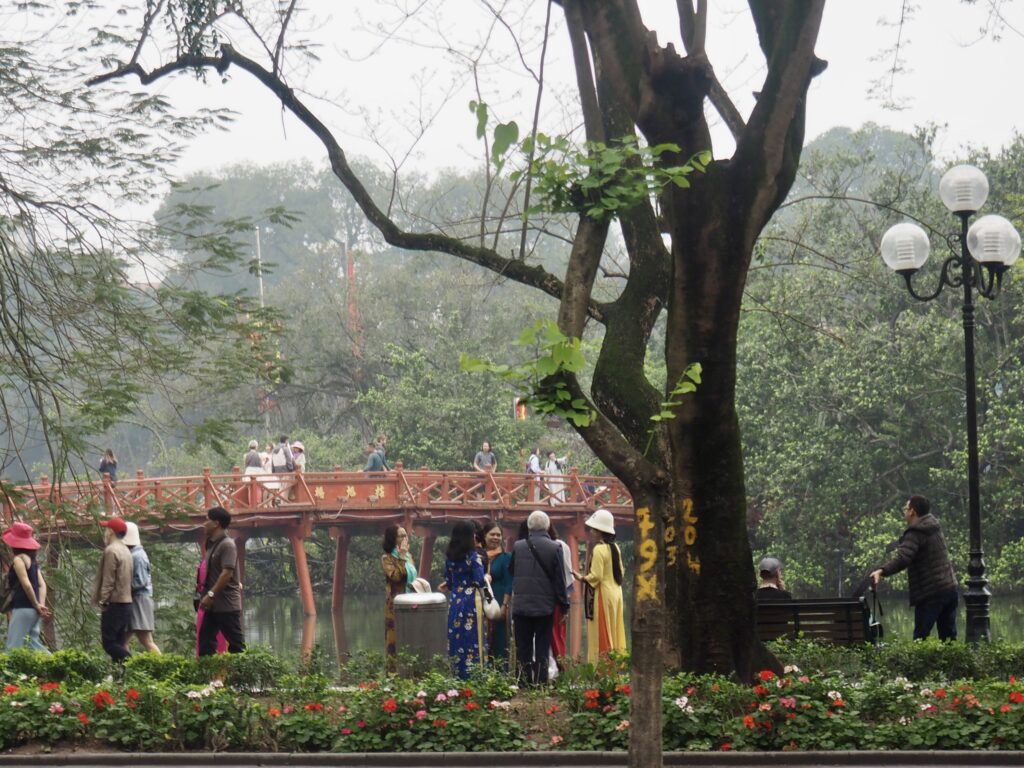
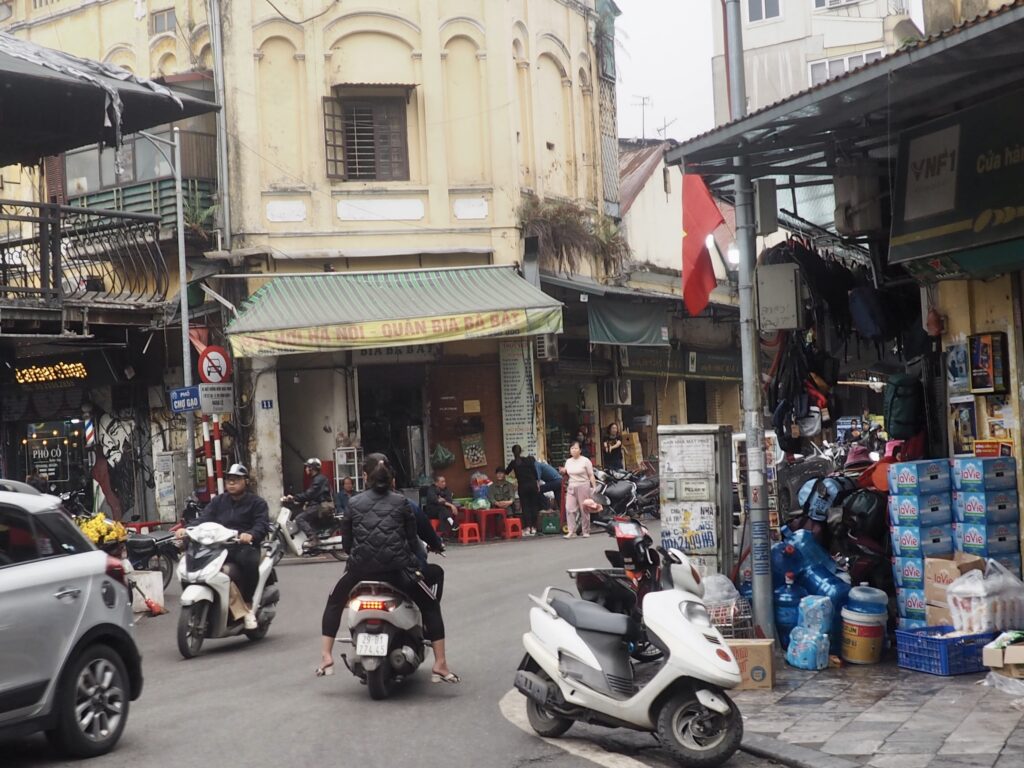

It was an odd feeling, admittedly, arriving in Ha Noi (“land inside the river”). But, a lot of time has gone by since America’s intimate involvement with the people here and that is dwarfed in the Vietnamese imagination by the nearly 100 years of French colonialism resolved by almost ten years of brutal warfare and 1,000 years of subjugation by the Chinese, despite the horrific scale of the loss of life in the war we suffered through together. Times keep changing. Although a one-party state, we’re told the government is “communist” in name only and, of course, the West is eager to invest in any counterweight to China (and Vietnam is eager to play that role).
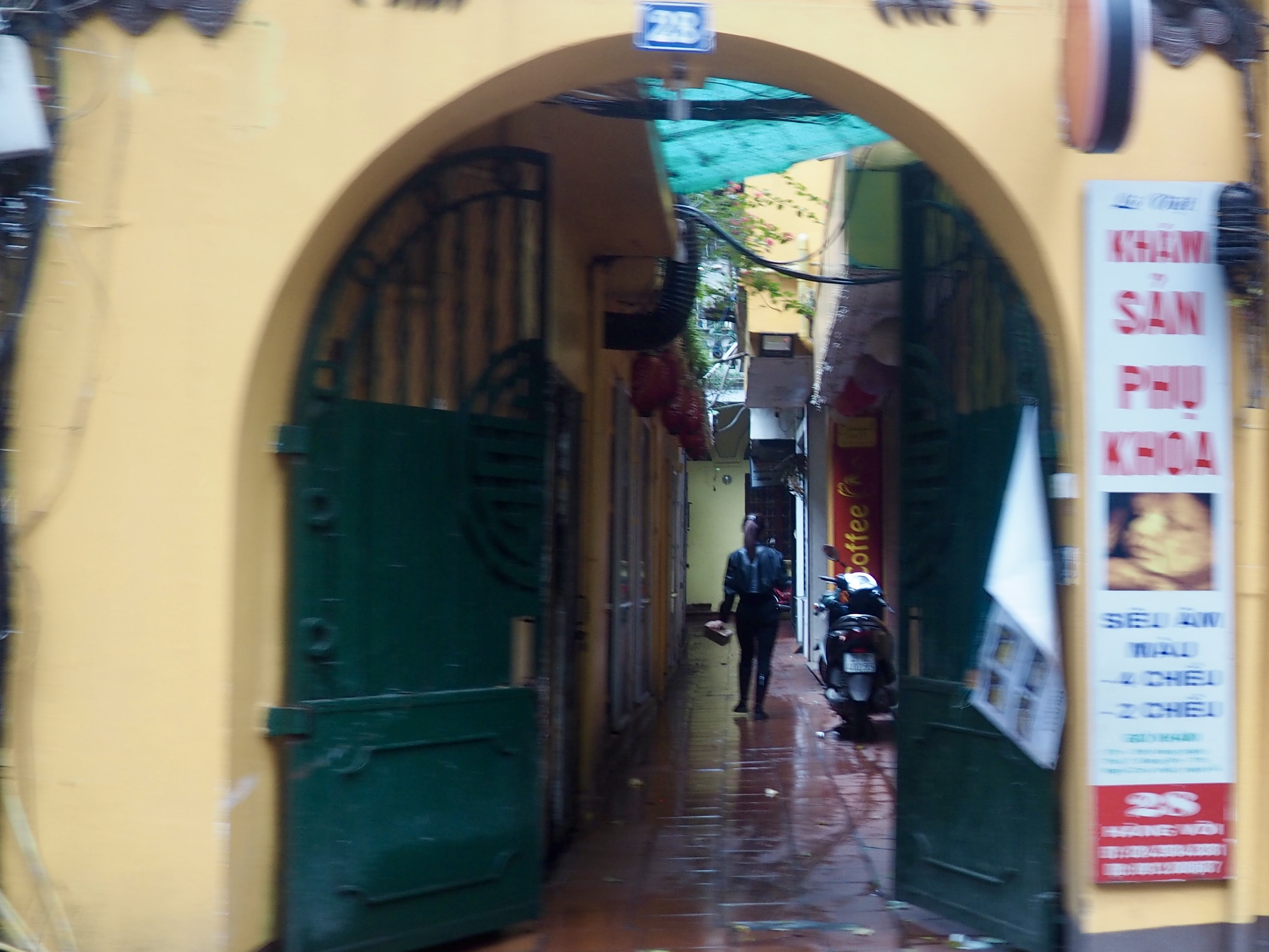
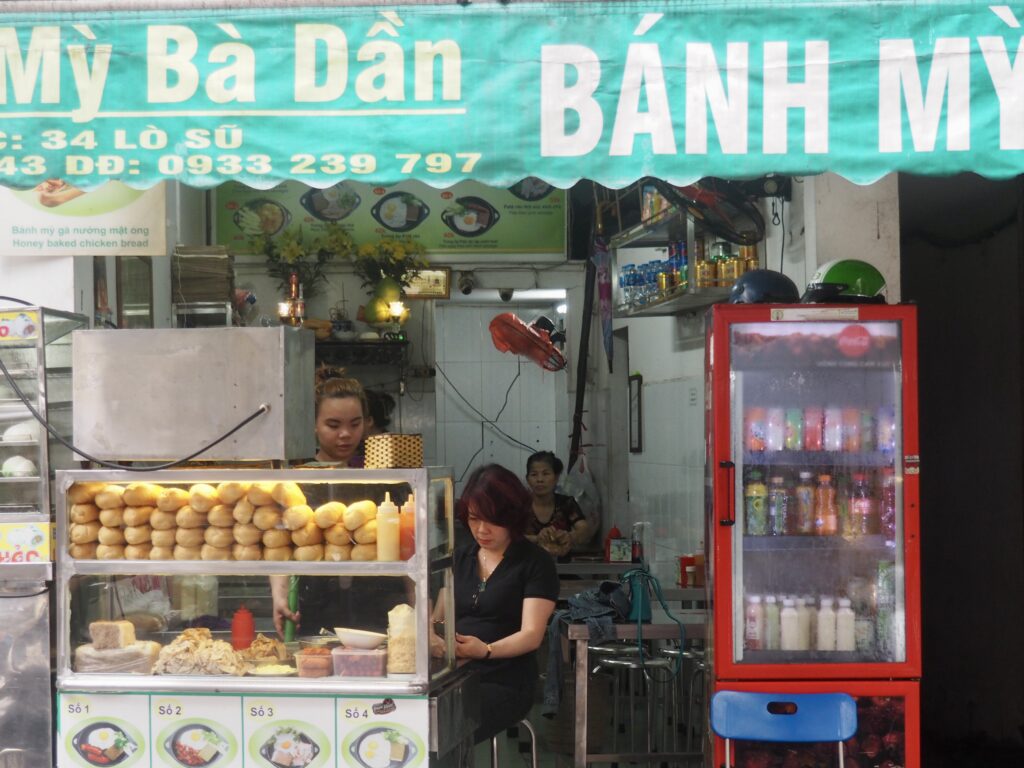
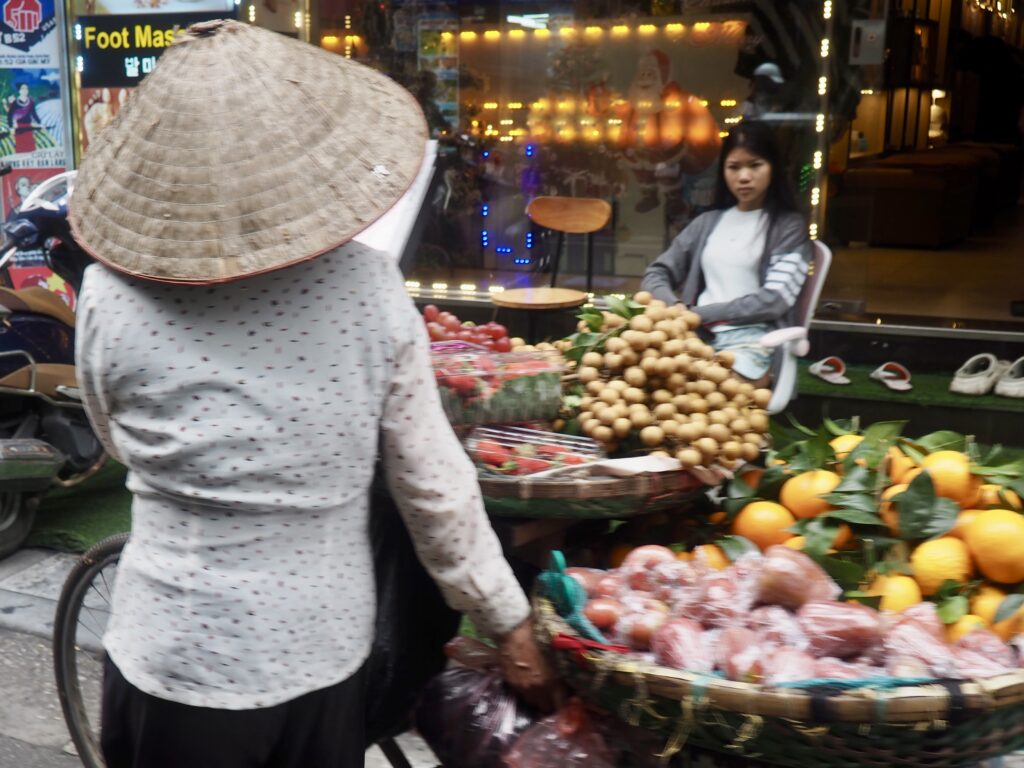

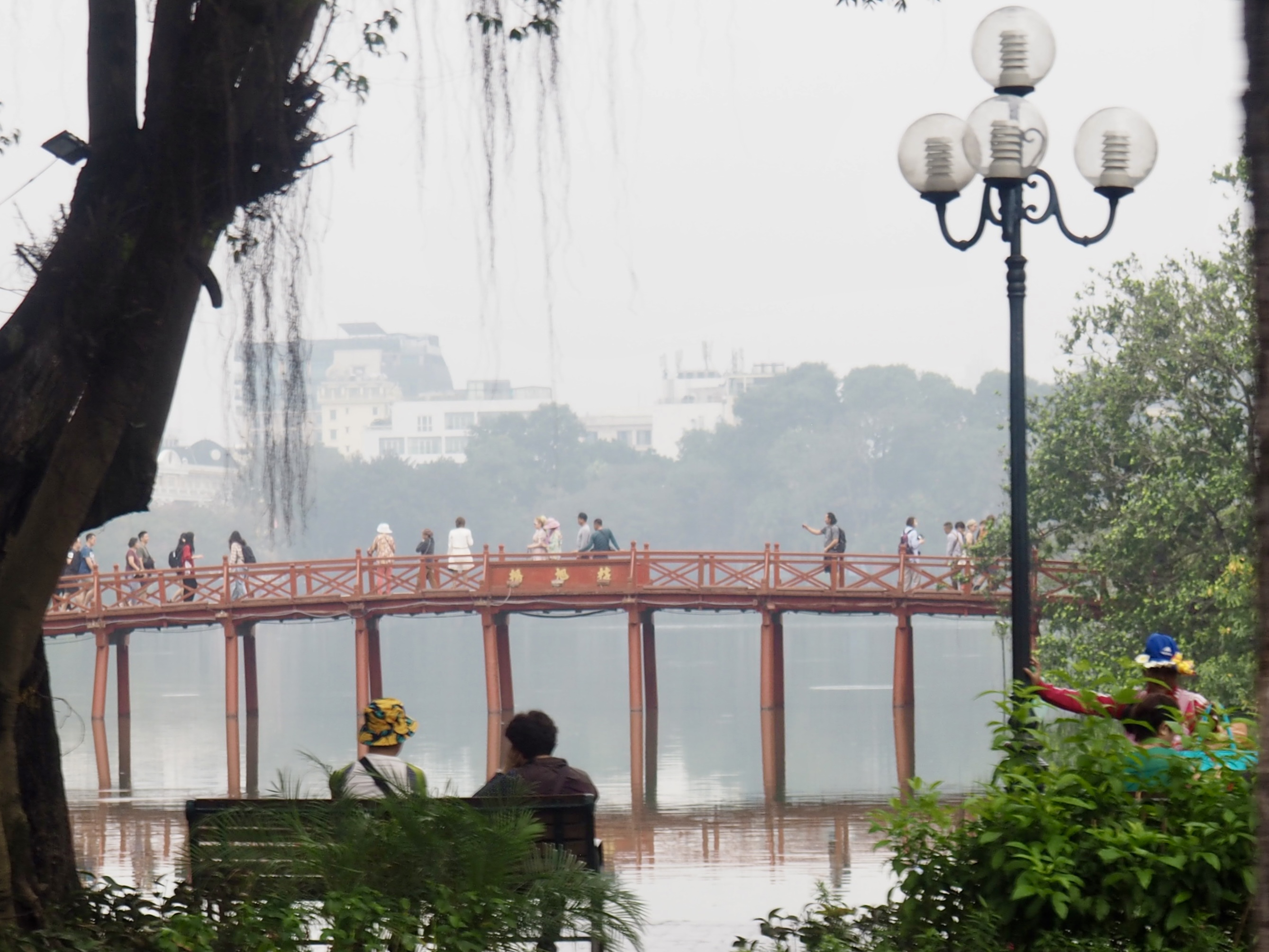
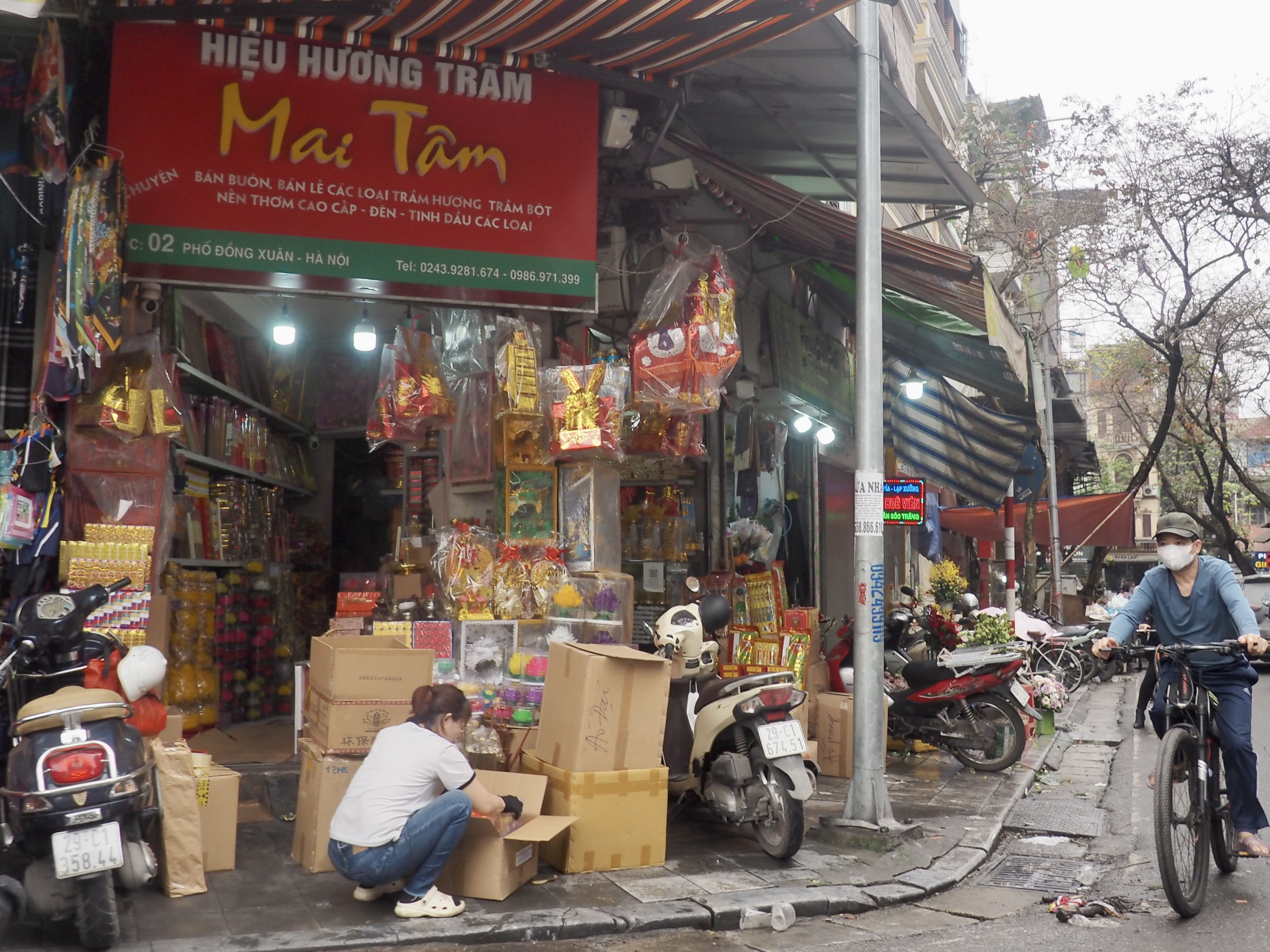
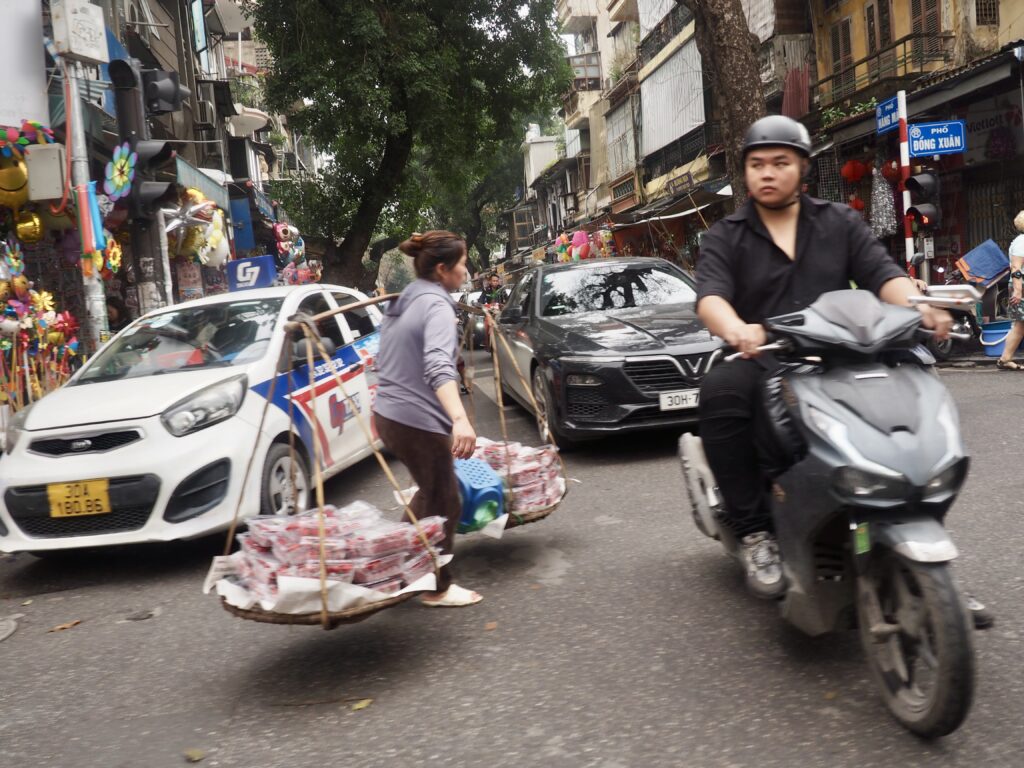


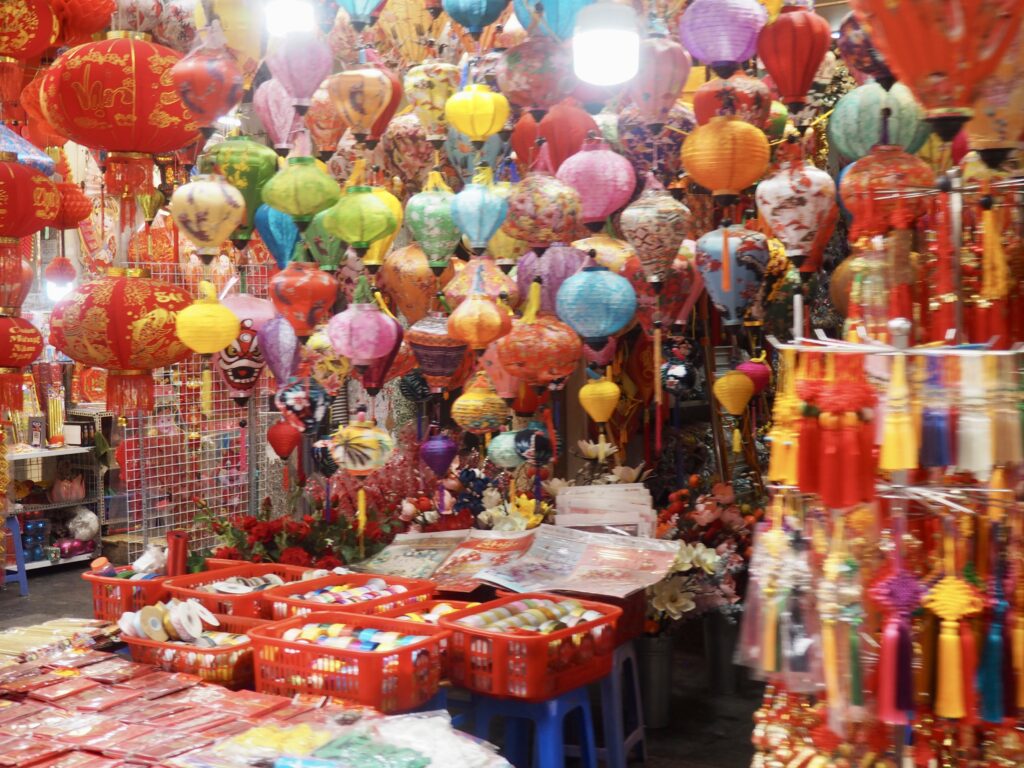

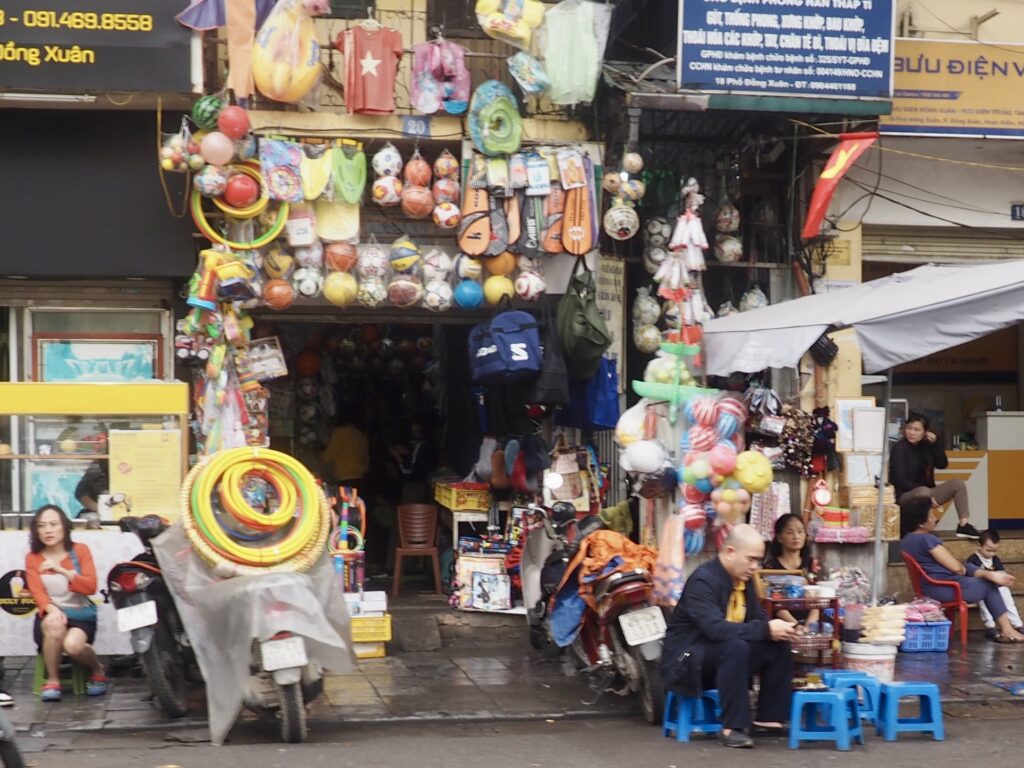



Hanoi is a dynamic city with a sense of energy and purpose and more to see and do than we had time. That’s not to say that it’s easy to get around on foot. It’s a motorbike city and pedestrians have no place to walk other than the street because the sidewalks are taken up both by commerce and as parking for all those motorbikes. Our adventure of walking to a restaurant in the neighborhood of our hotel was initially a little harrowing, but you get used to everything and we regained the skill of being cautiously intrepid.
Time Out for Banh Mi!
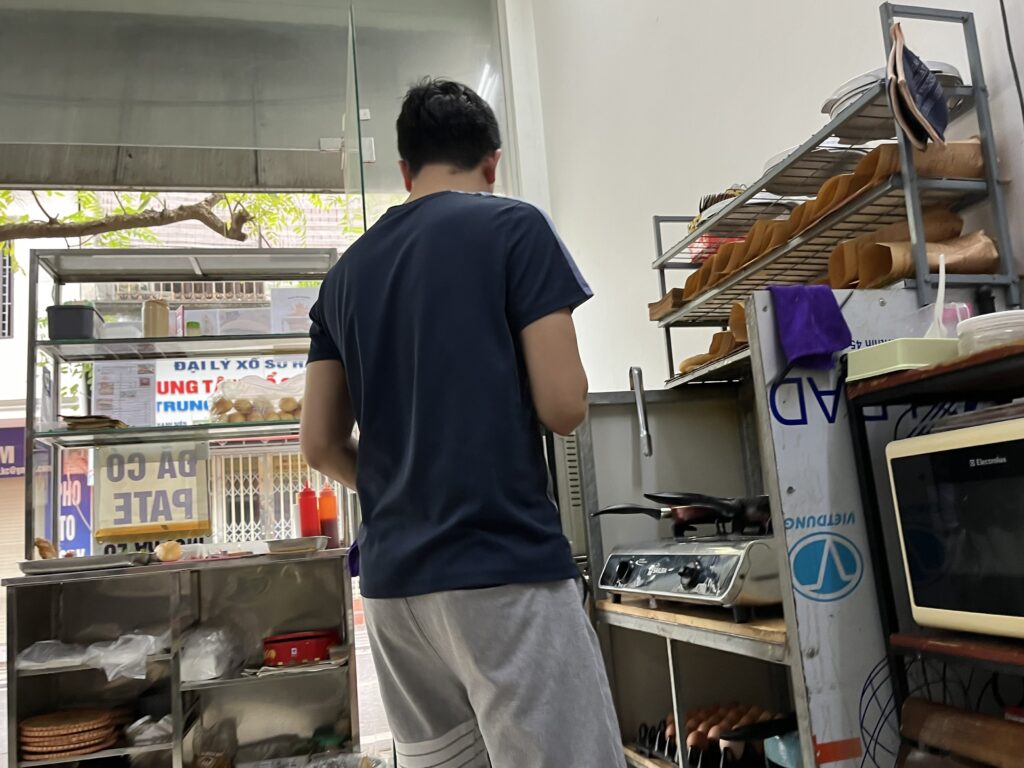

One of the many gifts to gastronomy from the collision of traditional Vietnamese cuisine and the French kitchen is banh mi, the cucumber, sauce and cilantro with the whatever-have-you meat on a baguette that is sheer pleasure to eat. So, we set out from our hotel to find a very local place specializing in only banh mi. Not as much of the goodies on the inside as one stateside and the seating was on those little plastic stools about half the height of a western chair, but hard to complain when two sandwiches and two Cokes run up a tab of around $4 or so. And, yes, delicious.
Tran Quoc Pagoda






As we awaited the start of our organized tour, we explored a nearby ancient Buddhist temple on a little island in the lake near where John McCain crash landed during the “American war.”

Hoa Lo Prison (aka the Hanoi Hilton)
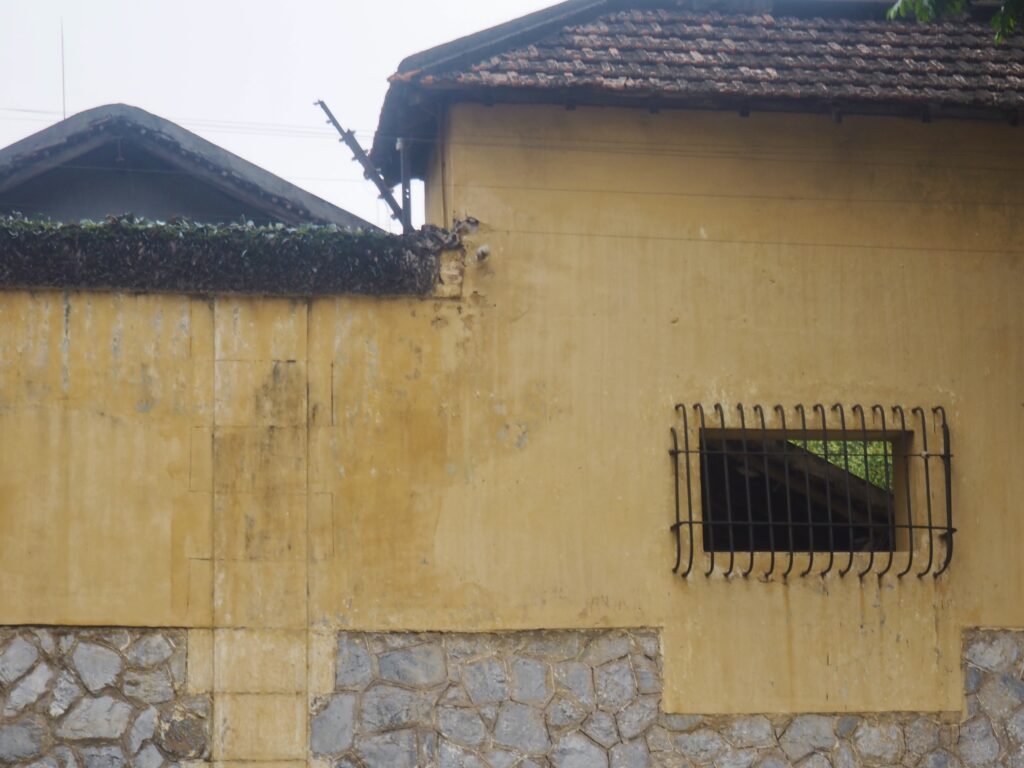








Before it acquired infamy in American minds, Hoa Lo was a notorious symbol of French cruelty and oppression in their efforts to maintain iron fisted control of not only Vietnam, but all of Indochina. The guillotine seemed especially fascinating to the many visitors.



And, of course, some artifacts from the time of the inhumane imprisonment of Senator McCain and the other captured aviators are also on display.
Ba Dinh Square

Ba Dinh Square is a vast (80 acres) public space accessible only through security where, most importantly, Ho Chi Minh read a Declaration of Independence from France on September 2, 1945, hoping for international support, including from President Truman to whom he sent an unacknowledged request for recognition and assistance.
The Mausoleum
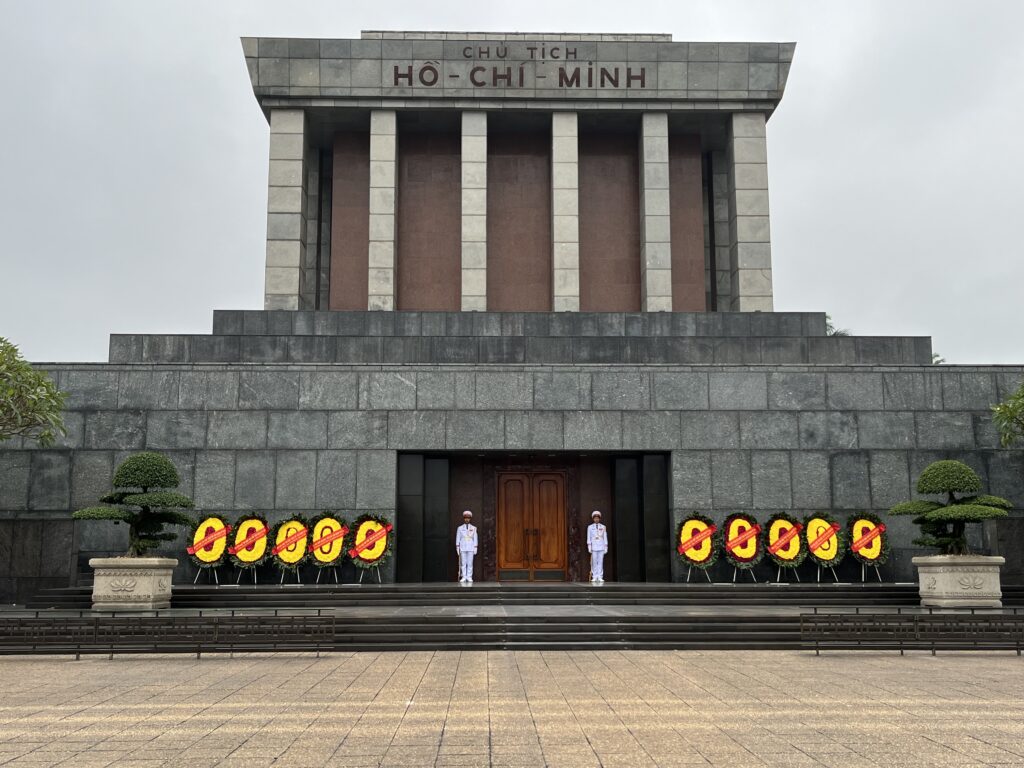
Ho Chi Minh’s request to be cremated was ignored and he got the full Lenin and Mao treatment instead, including periodic public viewing. It’s a rather imposing site and, we couldn’t help thinking, a bit ironic.
Presidential Palace
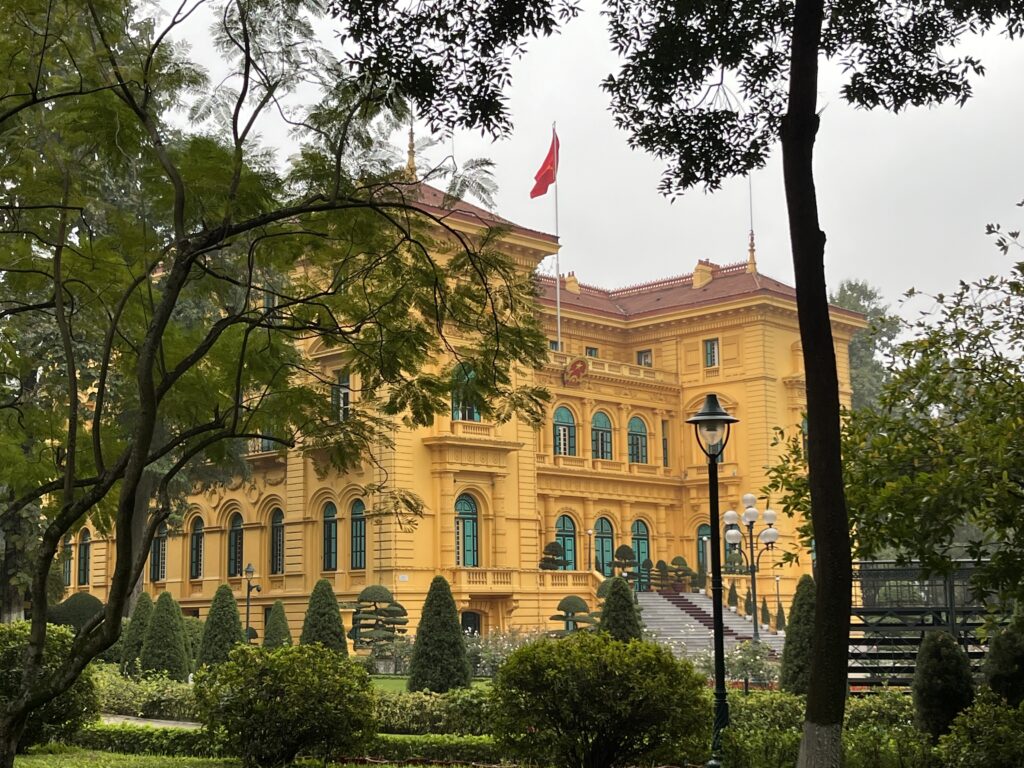
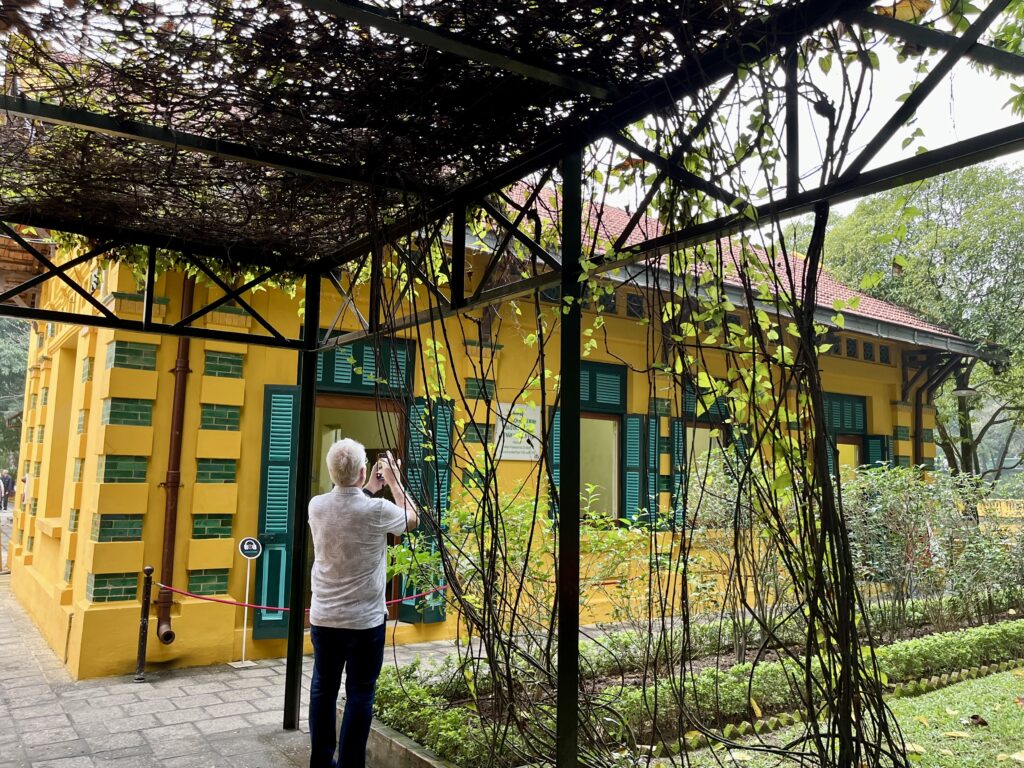
Yellow was the Emperor’s favorite color, so the French obliged, as did he. When Ho Chi Minh finally booted the French in 1954 (after nearly a decade of savage warfare), he declined to occupy the palace and lived in the much more modest quarters out back.
Ho Chi Minh Stilt House
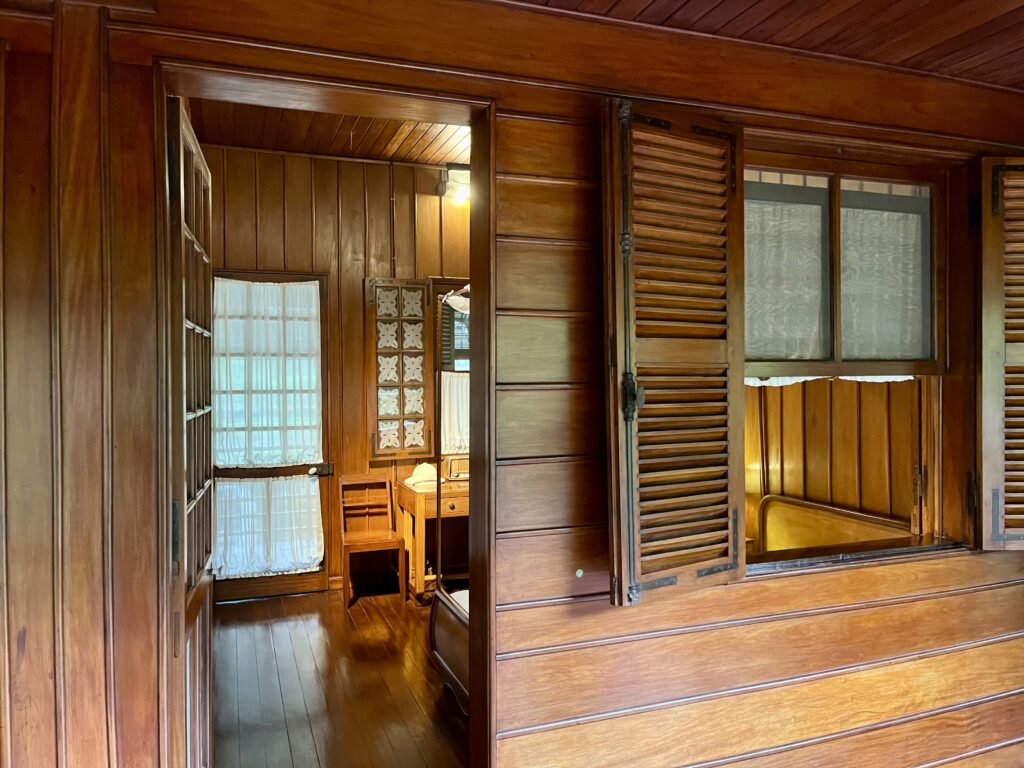


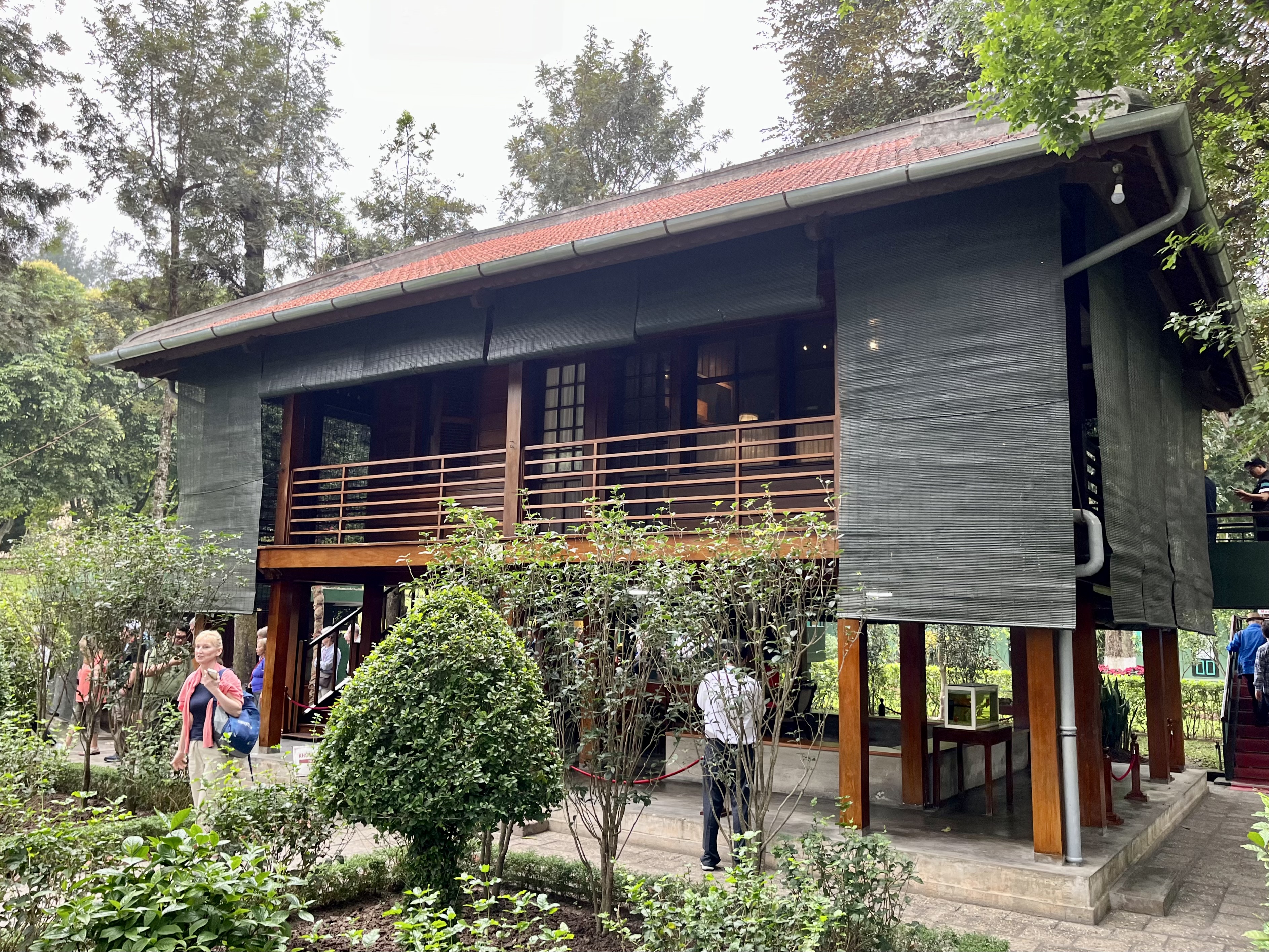
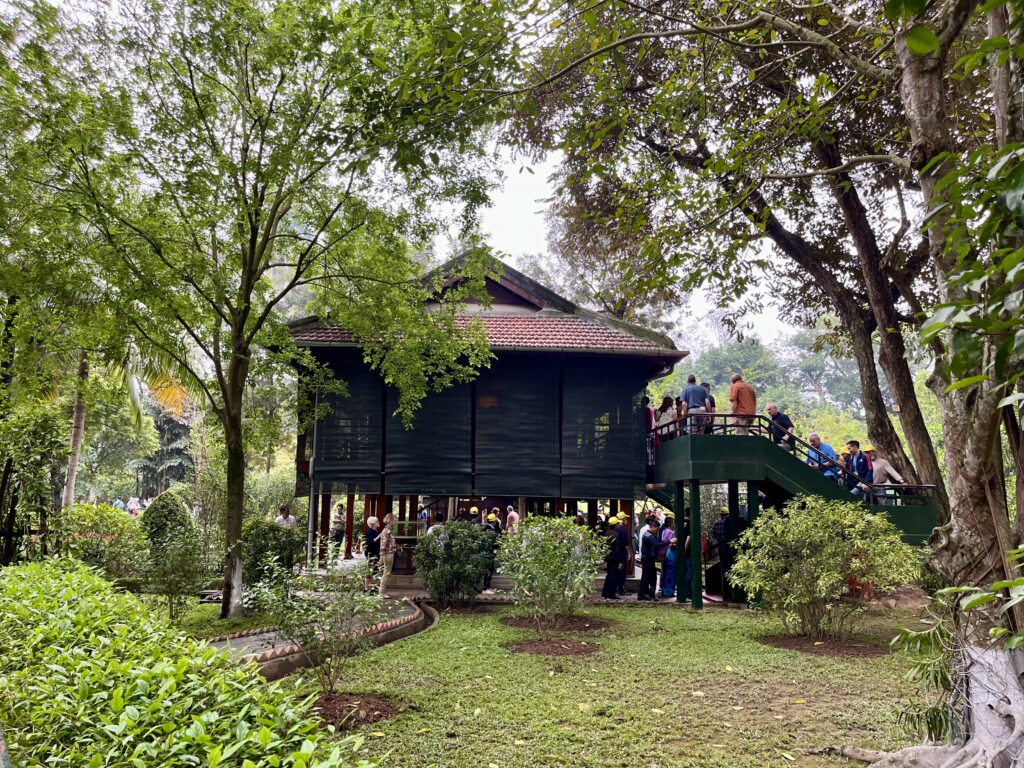
“A grateful nation” built a residence more to his liking in 1958 in which he lived until his death in 1969. Unfortunately, they forgot to provide toilet facilities, so he continued to run back to his previous quarters, above, for those purposes. Other than that, it’s quite a nice place. Per the custom throughout much of Southeast Asia, the area under the house is also living space. The upper right photo shows the entrance to his bomb shelter in a separate building.
One Pillar Pagoda
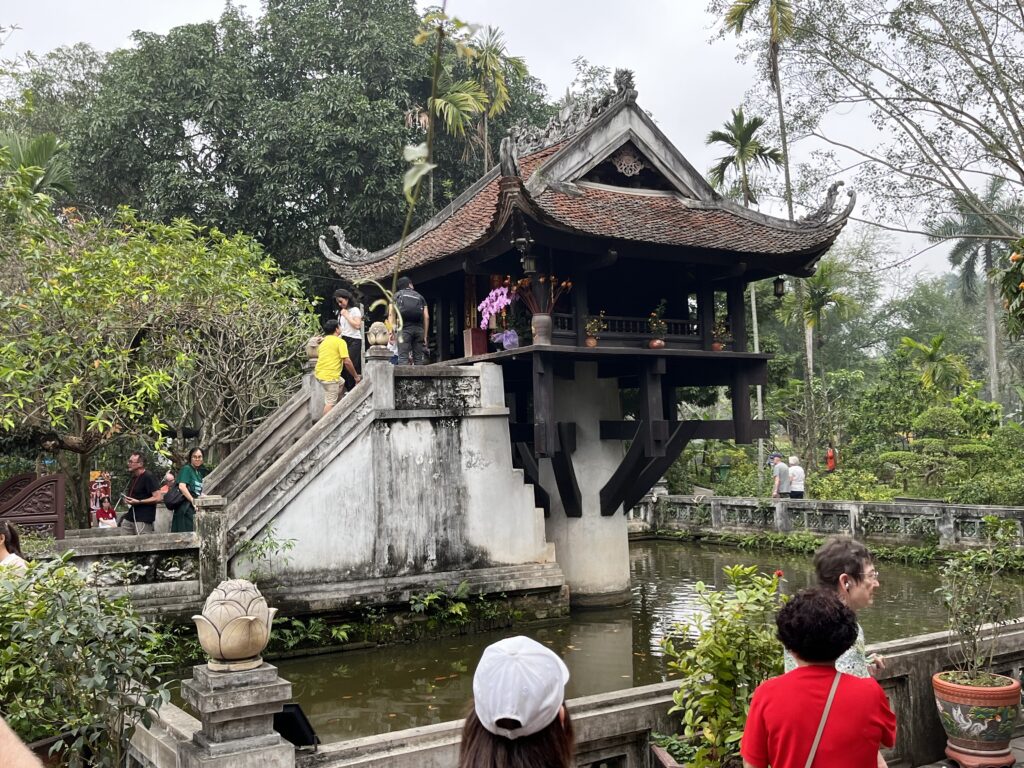

Nearby Ba Dinh Square is a small, but beautiful and unique, Buddhist temple.
Van Mieu (Temple of Literature)

Dedicated to Confucius and Confucian study, the Temple was established in 1070 and became the home of the Imperial Academy to educate the princes and other elites from 1076 until 1779 as the capital shifted to Hue.





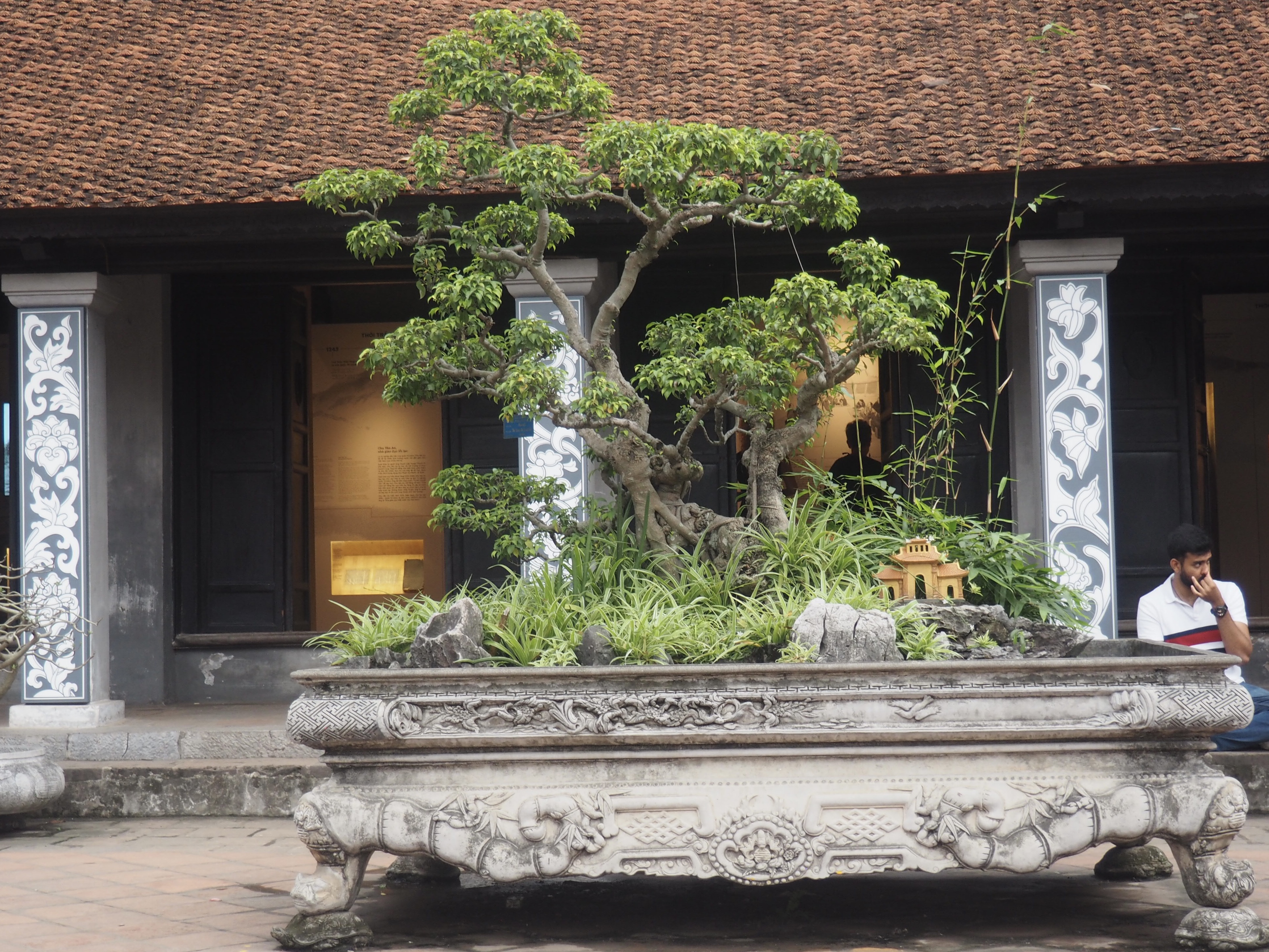


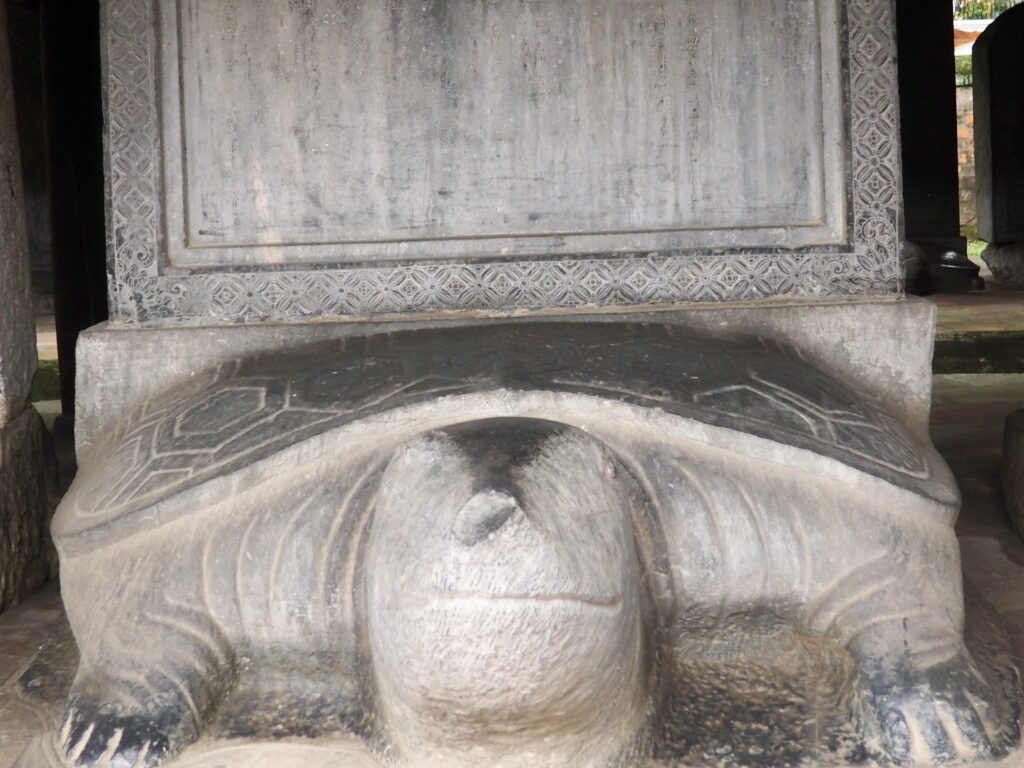
Beginning in 1484, Doctors Stelae (those big slabs of stone) were erected to record the names and birthplaces of successful graduates of the triennial royal examinations. The turtle supporting each of the surviving 82 stelae is, among other things, a symbol of wisdom and one of the holy animals of Vietnam.
Vietnam Museum of Ethnology
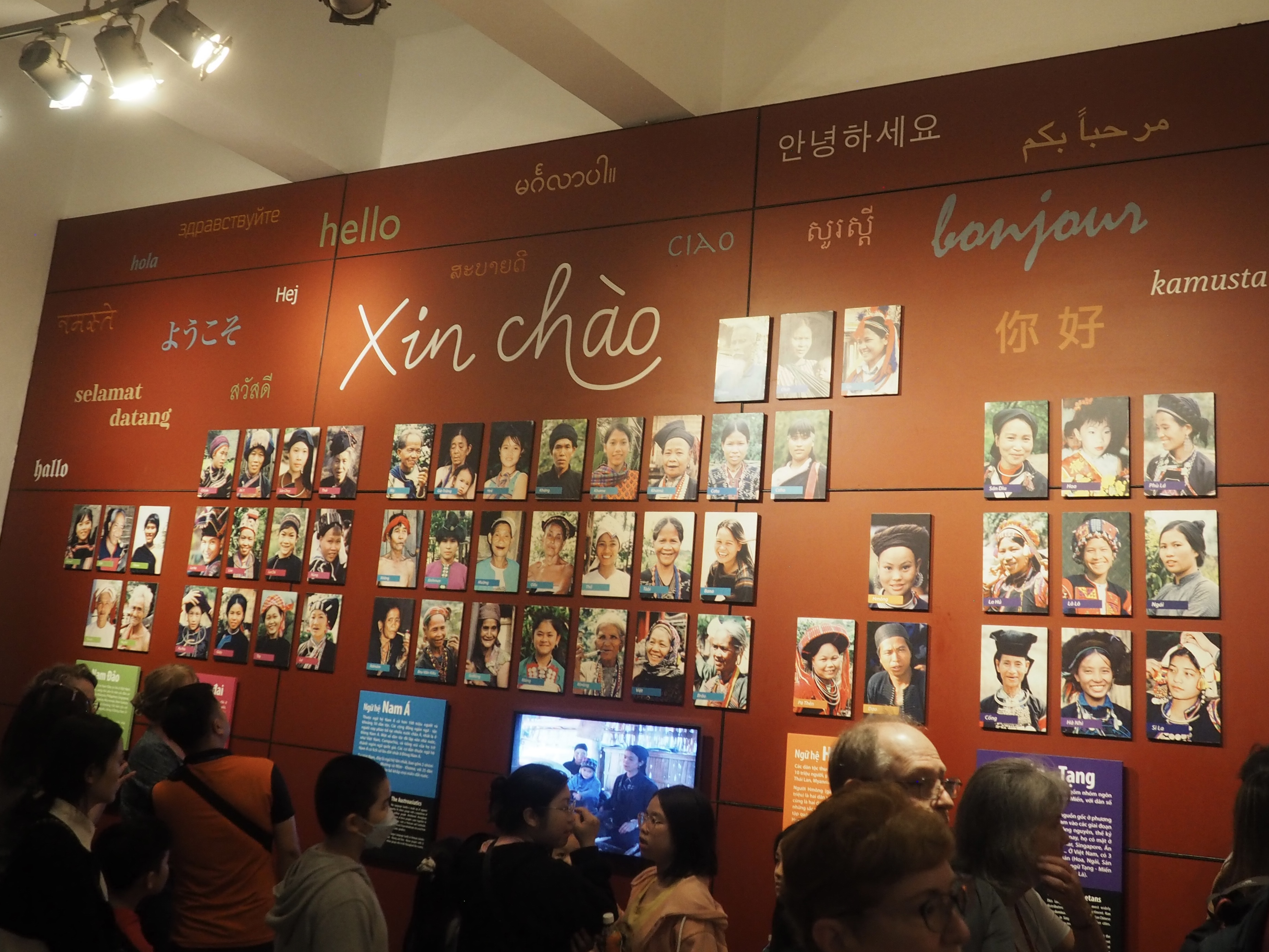
The Museum of Ethnology focuses on the 54 officially recognized ethnic groups within Vietnam, a country created by the gradual extension of authority by the Viet civilization centered on Hanoi and the valley of the Red River on whose banks the city lies.
















Exhibits are inside and out for which, sadly, we barely had time for a quick look-see; and there’s a separate museum focused on Southeast Asian peoples and cultures that we didn’t have time to see at all. It’s a very impressive effort to provide some visibility to a wide range of internal ethnicities.
With that, we boarded our flight to Siemreap, Cambodia.

